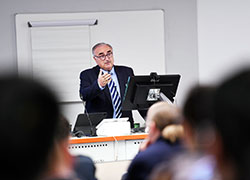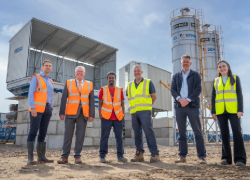Pioneering brownfield sites project helps to transform the ‘Trees Valley’
A pioneering project, which could transform thousands of acres of derelict brownfield sites in North East England, is expanding after successful trials.
The University of Teesside’s Clean Environment Management Centre (CLEMANCE) is using willow and grasses to clean up contaminated sites once used by industry, a process known as phytoremediation.
Entitled BioReGen, the project began in 2004 with test planting at several small brownfield sites, the first being a former enamel works at Fylands Bridge, near Bishop Auckland, County Durham,
The willow trees and the miscanthus, reed canary and switch grasses cleaned up the soil by absorbing contaminants such as zinc, copper, cadmium and heavy metals in coal ash.
BioReGen believes the method can work on bigger sites and planting has now been carried out on five larger areas, each covering a hectare and all with a history of heavy industrial use.
The five full-scale demonstration sites are at:
- the former Haverton Hill shipyard on the River Tees, near the Transporter Bridge
- part of the old Head Wrightson engineering site, at the Tees Barrage, made famous by Margaret Thatcher’s Walk in the Wilderness during a visit to Teesside two decades ago
- a former colliery and coal yard at Binchester, near Bishop Auckland, County Durham
- Warden Law, a landfill site, and former gravel pit, near Sunderland
- a former sewage treatment works at Rainton Bridge, near Houghton-le-Spring, Wearside.
CLEMANCE believes the work, supported by a 1.2m Euros grant from the European Union’s LIFE-Environment research programme, has major implications.
Dr Richard Lord, CLEMANCE’s Programme Leader for Contaminated Land and Water, said: ‘When we started this project, we did not know if we could grow plants on such contaminated land but it has been a success everywhere we have tried it. We have proved that phytoremediation works and what works on a small site can also do so on much larger sites as well.
‘It is also much cheaper than having to clean up a site or remove contaminated soils to landfill sites. Developers looking to do that spend millions of pounds per hectare, whereas our method costs only tens of thousands of pounds.
‘The potential of our project is huge. There are 1,155 hectares of brownfield land in the Tees Valley alone.
‘This is not a quick fix, though. To get a site ready for development through this method could take years but we are on the right track. We regard it as a holding operation until the sites are needed for industry again.
‘In the meantime, we are making them attractive, and good wildlife habitats, rather than visions of unsightly dereliction which blight the image of the North East. We are helping to create the Trees Valley.’
Clemance has also been negotiating with energy provider SembCorp about providing willow to the company’s recently-opened Wilton 10 wood-burning power station, on the Wilton International site near Redcar, east Cleveland.
Dr Lord said: ‘Wilton 10 has a huge appetite for timber and we can help provide it, particularly if we expand our planting over larger areas. What started as a research project has found a commercial application. This is as sustainable as it gets.’
 Teesside University hosts groundbreaking hydrogen conference
Teesside University hosts groundbreaking hydrogen conference University supporting development of new £1m concrete plant
University supporting development of new £1m concrete plant Academic’s artwork on display at Middlesbrough station
Academic’s artwork on display at Middlesbrough station